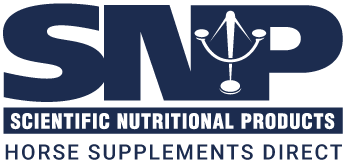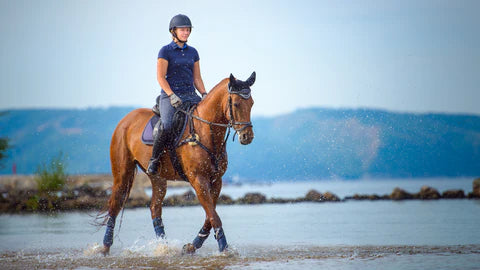Equine lameness is one of the most common reasons your horse or pony may need a veterinary examination. In our latest blog Scientific Nutritional Products takes a look at the process involved.
In the unfortunate event of your equine friend presenting a lameness the first thing horse owners need to do is contact their veterinarian. Lameness can be caused by a variety of reasons and your vet will be able to get to the bottom of the issue with a series of diagnostics.
The initial evaluation
The vet will ask you a range of questions in order to establish the basic details and get the full history on your horse or pony. They will take into consideration their age, breed and the type of exercise they undertake. The veterinarian will need to know the duration of the lameness and when the onset occurred as well as any changes which may have taken place in your management. These could be such as; change of farrier, an increase or decrease of exercise or an environmental change such as moving yards.
The dynamic assessment
Your veterinarian will observe your equine’s posture in order to see if they are resting a limb or shifting their weight. They will assess their muscle tone to see if there is any muscle atrophy indicating a more prolonged period of dysfunctional movement.
The vet will then want to see your horse moving. This is because detecting the a lameness relies on an ability to detect an asymmetry of gait. Factors considered in this asymmetry include stride length, rhythm and the movement of the head, neck and pelvis.
Further Investigation
Once your horse or pony has been assessed dynamically the vet will likely proceed with further investigation.
If there is a visible swelling the area may be scanned and if not flexion tests; which involve holding the leg in a flexed position after which the horse is immediately trotted to analyse the gait may be undertaken.
Once the affected area has been identified the vet will use diagnostic nerve blocks to localise the lameness to a specific anatomical region and may conduct x -rays. If these measures do not provide the information as to why your horse or pony is lame further measures such as nuclear scintigraphy, also known as a bone scan or MRI may be used.
Treatment and Rehabilitation
After establishing the area and the cause of the lameness the vet will draw up a treatment plan. This will include the period of rest your equine will need and any veterinary treatment such as medicating joints. The vet may recommend seeing an equine therapist such as a physiotherapist, massage therapist or osteopath and as a team they can guide you regarding when and how it is appropriate to return to exercise.
During the healing phase of any injury optimising the diet to provide high quality ingredients can be hugely beneficial to health and well-being. Horse Joint Right Supreme produced by Scientific Nutritional Products supports horses and pony’s Joints resulting from Injury.
This Horse Joint Supplement contains optimum levels of Glucosamine for Horses, Hyaluronic Acid, Chondroitin and MSM which help to build equine cartilage, ligaments, tendons and develops synovial fluid found in joints. Horse Joint Right Supreme also includes high levels of Omega 3.
Horse Joint Right Supreme is available from www.horsesupplementsdirect.co.uk or by contacting a member of our team on free phone 0800 032 7774.



